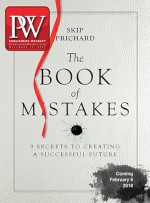Historian Restall challenges established interpretations of the encounter between Montezuma and Hernando Cortés in When Montezuma Met Cortés (Ecco, Jan.).
What led you to write about the meeting between Montezuma and Cortés?
I realized that my 2003 book, Seven Myths of the Spanish Conquest, though revisionist, didn’t go far enough—that the way to do it would be to focus on just one conquest myth. The more I dug in, the more I found that many of the facts I examined turned out to not really be facts. They were invented or propagated 500 years ago. Montezuma was supposed to have surrendered to Cortés on Nov. 8, 1519. So I began a book about that day. As I wrote, I realized people needed to know what happened before and after.
Why is it important to expose the meeting as an event that didn’t happen the way we think it did?
It acts as a foundation for an entire view of the Spanish conquest of Mexico, Spanish colonialism, and Spanish conquest activities elsewhere. European imperialism and colonialism over hundreds of years created the world in which we live. If a myth like this one about the meeting can survive 500 years and be repeated in print and images, what does that say about other historical moments that are assumed to have happened a certain way?
What kind of evidence and language skills did you need to reconstruct a fuller account of the meeting?
That was the fun part—I needed to read accounts written in multiple European languages in order to crack how misconceptions, myths, and lies had flowed across the centuries. Too often, people stick to the old patterns of evidence within their field. For instance, a scholar of the 16th-century would focus on 16th-century sources. But a story written in Spanish in the 16th century travels and appears in German and French in the 18th century. Scholars tend to assume that they’re translating and repeating the same story; they don’t see it as changing along the way. The original retelling of the meeting is just the roots of the story; you have to trace all the branches.
Do your findings about this encounter hold any lessons for today’s debates about statues and commemoration?
Yes, in a rather general way. We cannot make any assumptions that any facts about the past that seem absolutely certain are really that certain. Even something that seems well evidenced and that has been studied an enormous amount is still worth questioning and rethinking. Statues are sometimes seen as literally concrete or stone embodiments of basic facts. But what does the statue do for us as a discussion point? What’s important is that that statue acts as a prompt to talk about the past and its significance for the present. In that sense statues are just like any other piece of historical evidence—one of thousands of little prompts that can encourage people to say, let’s talk about this.



 Volume 264
Issue 51
12/11/2017
Volume 264
Issue 51
12/11/2017





